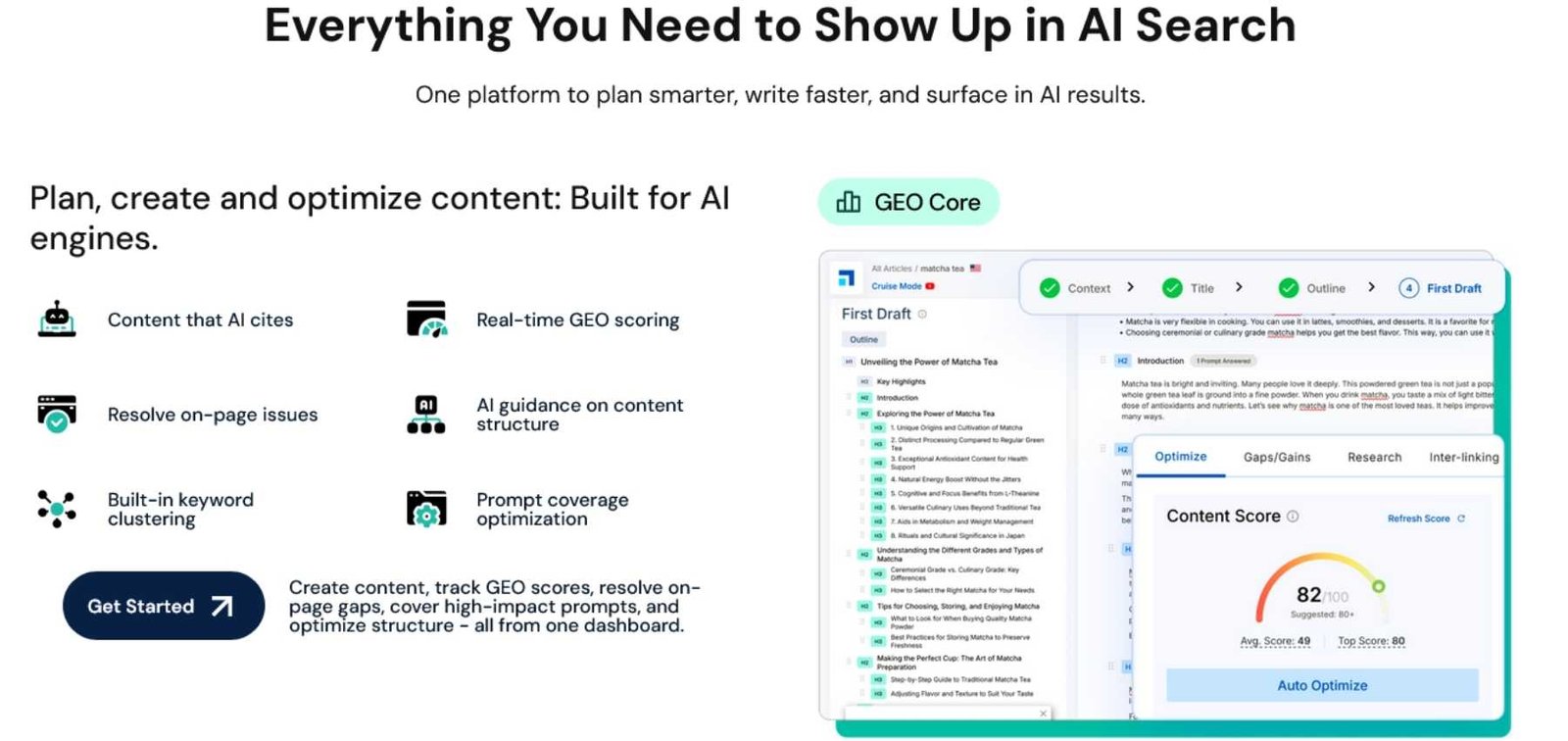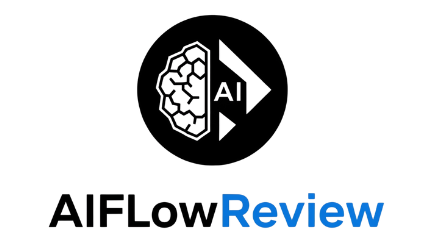AI writing tools are evolving fast, and Scalenut has made headlines as an all-in-one platform for content creators and SEO experts. I know firsthand that finding a reliable, effective AI assistant isn’t just about features; it’s about results, ease of use, and ongoing value. That’s why a current scalenut review matters now more than ever, especially with so many new options entering the market.
Scalenut promises to handle the entire content lifecycle, from keyword research to optimization. In practice, I’ve seen it save hours with its keyword clustering, content briefs, and built-in optimization guidance. Its AI content quality is solid for first drafts and research, though it sometimes lacks the human touch that expert writers bring. For most users, Scalenut strikes a strong balance between automation and flexibility, and I rate it a fair 4 out of 5.
If you’re an AI enthusiast or work with AI-powered SEO, this review will help you decide if Scalenut is the right fit for your workflow. You’ll get clear insights into where it shines, where it can improve, and how it compares to other options. For a broader perspective on how it stacks up against other leading tools, check out the best AI content writing tools 2025.
Overview of Scalenut’s AI Content Capabilities
Scalenut stands out among AI writing platforms by mixing automation with intelligent research to support the entire content journey. In putting together this Scalenut review, I spent significant time with its AI features to see where it delivers and where it could step up. Let me break down the platform’s content capabilities—from research to writing and optimization—so you can judge if it fits your needs.

Content Research: Smart Insights and Briefs
One of Scalenut’s strengths is its depth of research before writing—something that instantly sets it apart from many AI content tools. The platform pulls live data from the top-ranking search results, not just outdated datasets. When I use Scalenut’s research module, it compiles competitor outlines, NLP key terms, and secondary topics. The result: all the context and structure you’d expect from a thorough human brief, fast.
Notably, the content brief section sits right inside the editor. This lets users work directly with recommendations and structure as they write, instead of shuffling between tabs or tools. That feature saves time and keeps the workflow focused.
AI Writing: First Drafts, Templates, and Brand Voice
Scalenut’s AI writing engine builds on its research foundation to generate blog posts, product descriptions, and more. It uses a hybrid of GPT-3 with proprietary models, helping it sound more current than many alternatives. You can start an article from scratch, fill in a main keyword, pick a tone, and launch the Cruise Mode for a long-form draft in minutes.
The platform doesn’t stop at basic articles. You’ll find over 40 templates for short and long-form content. This includes outlines, FAQ sections, active/passive voice converters, and even meta descriptions. If you’re a copywriter or run an agency, these templates speed up repetitive tasks and help maintain consistency across different types of content.
While the AI-generated drafts sometimes fall into repetitive or bland phrasing (a common limitation for all but the top-tier AI writers), the initial structure usually makes editing straightforward. You can reword, expand, shorten, or switch the tone of any section with just a few clicks. For those wanting content that sounds less robotic, Scalenut even features an AI content humanizer to fine-tune for naturalness and originality.
Content Optimization: Real-time SEO and On-Page Guidance
Getting content to rank requires more than just keywords. Scalenut’s Content Optimizer is a built-in editor that acts like a virtual SEO coach. It checks your draft against current SERP leaders, giving you real-time recommendations on things like:
- Keyword usage and density (without stuffing)
- Suggested internal and external links
- Heading and subheading structure
- Word count for optimal depth
- Meta titles and descriptions
Optimization tools go beyond generic advice. I found the actionable suggestions for structure and key phrase usage—plus the side-by-side competitor data—especially valuable. It feels much like having a built-in consultant guiding your edits to hit specific SEO goals.
Keyword Planning and Clustering
For the planning stage, Scalenut’s keyword planner groups related terms into clusters. This helps you target wider topics and build authority around core themes. The system presents suggested clusters based on your seed keyword, allowing you to expand site content with interconnected topics. While the relevancy of clusters can vary, most users will benefit from the easy overview of potential article ideas.
By integrating keyword planning into the writing and optimization process, Scalenut streamlines the entire SEO content lifecycle. For those who care about staying organized, this single-dashboard workflow is much easier than jumping between multiple apps or spreadsheets.
Variety of Use Cases
Scalenut isn’t just for blog writers. The tools are versatile enough for:
- Content creators wanting to save research and outlining time
- SEO professionals handling client sites or large content portfolios
- Marketers launching new campaigns with strict keyword targets
- Agencies producing everything from product copy to social media snippets
If you want to explore a more practical look at how these features work together, Scalenut itself has a detailed feature overview that illustrates tool integration for different user types.
My Take: How Scalenut Measures Up
While no AI tool fully replaces human creativity, Scalenut earns points by balancing volume and quality. Its strongest differentiators are the seamless research-writing workflow and the deep optimization feedback. I wish the drafts sometimes had a little more personality or nuance, but as a first step before deeper editing, Scalenut rarely disappoints. For teams needing a fast, data-driven content engine, it’s easy to recommend.
For those comparing solutions, you can also see how Scalenut stacks up against other leading AI platforms in my best AI content writing tools 2025 roundup.
Key Features and User Experience
Scalenut earns a reputation as a versatile AI-driven tool focused on supporting the full content lifecycle. From drafting posts to optimizing for SEO and streamlining teamwork, the platform sets out to simplify how creators and marketers reach their content goals. In this part of my Scalenut review, I’ll break down what it feels like to use the platform day to day and why its features make a real difference for content teams both big and small.

Content Creation and SEO Tools
The strength of Scalenut starts at the heart of content creation. The AI writing assistant stands out for its flexibility. I can draft long-form blog articles, social media copies, and product descriptions all within a single workspace. Switching formats is seamless—no need to open new windows or copy-paste between apps.
Scalenut’s SEO tools deserve special mention. The built-in Content Optimizer audits every draft, checking live SERP competitors while providing clear action steps. Real-time scoring covers not only basic keyword counts but also recommends headings, structure, key phrases, and even optimal word counts. This hands-on feedback guides each paragraph toward higher search performance.
Competitive research is also simplified. I like how Scalenut pulls together competitor outlines, NLP-enhanced terms, and secondary keywords, giving me a map of what is already ranking and how my content can stand out. I find the platform’s content outlining tools especially helpful. Generating an outline based on top-ranking content saves at least an hour per article. Each brief is actionable and easy to modify for brand voice or workflow needs.
The platform’s templates showcase practical value. With over 40 options—including intros, FAQs, and meta descriptions—I rarely have to start from scratch. This speeds up routine work for agencies and solo creators.
For another perspective on Scalenut’s content and SEO strengths and how it compares with other AI tools in 2025, I recommend checking out this thorough Scalenut review and feature rundown.
Collaboration, Integrations, and Workflow
Collaboration matters more as teams grow or content calendars expand. Scalenut includes role-based permissions and shared workspaces so teams can collaborate without the risk of files getting overwritten or lost. Team members can assign tasks, add comments, and monitor progress—all without leaving the platform.
Integrations also play a key part. Scalenut connects with tools like WordPress, Google Docs, and publishing platforms, letting you export finished content in just a few clicks. This tight integration keeps projects moving and helps maintain consistent formatting and branding from draft to publish.
Speed is where Scalenut really shines for businesses. Bulk content projects—such as multi-page blog campaigns or ecommerce product launches—benefit from queue management and batch processing. For individuals, the AI handles repetitive writing and provides first drafts, so I spend less time staring at a blank screen and more time editing or strategizing.
A recent Reddit review of top AI content tools also highlights Scalenut’s balance of automated efficiency and workflow control among leading options.
In my fair rating, Scalenut provides a robust, user-friendly environment. It brings value for both hands-on writers and strategic marketers, making it a worthy contender for anyone looking to boost content output without sacrificing quality.
Is Scalenut Worth It in 2025?
Scalenut gets a lot of attention from people looking for a one-stop AI content and SEO platform. By 2025, the question isn’t just about what features Scalenut has, but whether it truly delivers value for your time and money. My own experience, combined with current user feedback, points to a mix of impressive strengths and clear drawbacks. Let’s break down how Scalenut stacks up in terms of value, content quality, and long-term usability.
Real-World Value: How Much Does Scalenut Help?
Scalenut promises to cut content development time by up to 90% and boost organic traffic with its automation tools. In practice, most users—including myself—find the time savings to be closer to 30-40%. Where it excels is in research, outlining, and offering a straightforward SEO workflow. Beginners and solo bloggers will appreciate the quick content briefs, keyword clusters, and topic insights that take the guesswork out of organic content planning.
For those new to SEO or those who want a tool to guide their structure, Scalenut is genuinely handy. The platform’s G2 reviews and broader market surveys show ratings from users who save hours each month on research and initial drafts. However, the platform’s impact slides as you climb closer to professional publishing standards.
Content Quality: Where It Shines and Where It Needs Work
Scalenut’s greatest utility is in research and SEO planning. The AI generates decent first drafts and helpful outlines, but the content itself often comes out generic and flat. I’ve seen issues like keyword stuffing, rigid transitions, and repetitive phrasing that are common with tools based on GPT-3 and similar models. Even Scalenut’s content “humanizer” does not bridge the gap enough—you still need manual edits for a natural voice.
When you want fast, SEO-friendly first drafts, Scalenut works well. But when quality, originality, and brand personality matter, the platform’s output falls short. I consistently find myself overhauling large parts of the AI text before I’d trust it for a client or brand’s main site. Some external reviews echo this, confirming that the real-world quality misses the high bar set by top-tier competitors.
Usability and Workflow: Day-to-Day Experience
Scalenut gets high marks for its clean interface and workflow. The dashboard brings keyword planning, research, and draft generation together, which keeps everything in one place. You don’t have to juggle a dozen apps or tabs, saving valuable headspace and time. I also like the content optimizer module—it functions as a built-in checklist for SEO improvements and helps even novice users spot gaps quickly.
However, the user experience isn’t perfect. Team collaboration tools are quite limited, and integration shortcuts are basic at best. Slow response times and frustrating customer support continue to be a sticking point for many, especially when billing or tech issues crop up. If you’re running a solo project, these may not bother you, but agencies or teams hoping for seamless project management may want to look elsewhere.
Pricing: Honest Assessment of Value for Money
Scalenut’s simple individual plans work out fine for light users or solopreneurs. But as your needs grow, the true cost starts to creep up. You’ll find extra charges for more users, additional SEO reports, or extra keyword clusters beyond your plan limits. For larger teams, these costs add up quickly, and you may realize other platforms do more for the same price.
It’s also worth comparing Scalenut to competing tools that offer similar or better results, often without the hidden costs. Alternatives like Jasper, Surfer SEO, or Autoposting.ai can provide stronger AI writing, smoother collaboration, or more reliable technical support, as highlighted by several brutally honest reviews.
Is Scalenut the Right Platform for You?
If you’re a beginner or someone who needs strong SEO guidance and topic planning, Scalenut offers strong value for the price in 2025. It covers the basics of research, structuring, and SEO optimization in a clear, guided way. But if your goal is to publish top-tier, unique content or if you’re managing a busy team, you’ll quickly feel Scalenut’s limits.
Many experienced users see it as a helpful assistant, not a full replacement for skilled writing or robust agency workflows. For some, the built-in tools and insights are enough to warrant a subscription. For others, especially those with higher content standards or advanced publishing needs, Scalenut feels like a solid starting point, but not the destination.
 Photo by Damien Lusson
Photo by Damien Lusson
Ultimately, my fair rating of Scalenut in 2025 lands at 4 out of 5 for those looking for a smart, research-driven content platform with easy learning curves. Power users and agencies, on the other hand, may want to explore other top AI content writing tool options for a better fit with advanced needs.
Conclusion
Scalenut stands out as a helpful tool for automating research, planning, and first-draft creation, making it a smart choice for new content creators and solo SEO users. The platform’s strengths are its organized dashboard, actionable SEO insights, and ease of use—features that can speed up building a content workflow without the steep learning curve. My own scalenut review matches what real users report: while Scalenut handles topic research and on-page optimization with skill, the AI writing itself often lands a bit flat and still needs a strong editing hand for top results.
I rate Scalenut a solid 4 out of 5 for most individuals. It lets you test strategies quickly and develop a basic SEO foundation, but seasoned writers and growing teams may reach its limits fast. For anyone considering Scalenut, the best next step is to try the free version for firsthand experience before upgrading.
If you want more practical advice to find the best AI tools for your work, explore the reviews and resources across AI Flow Review. Your feedback matters—share your experience below and help others choose smarter solutions for their content needs. Thanks for reading and stay connected for more in-depth tool reviews that keep you ahead in the AI space.

















